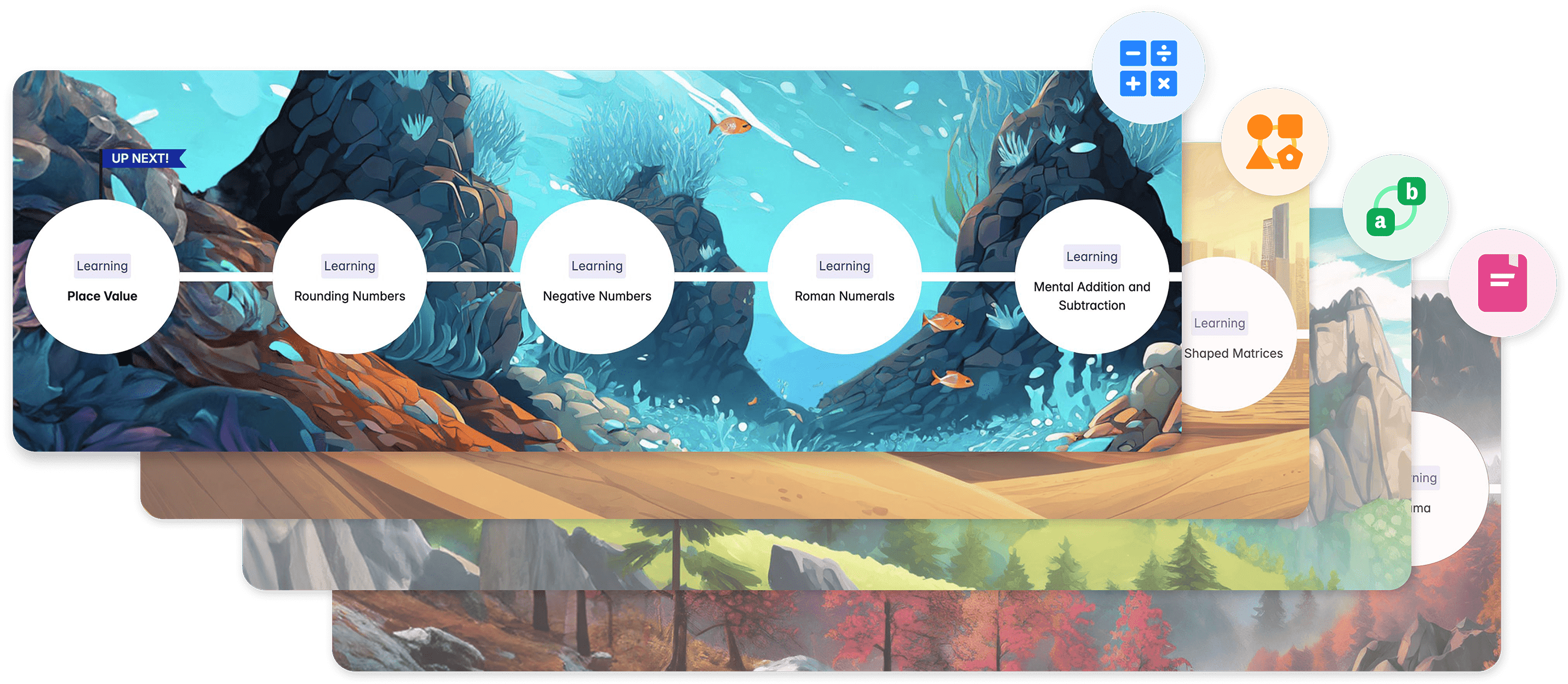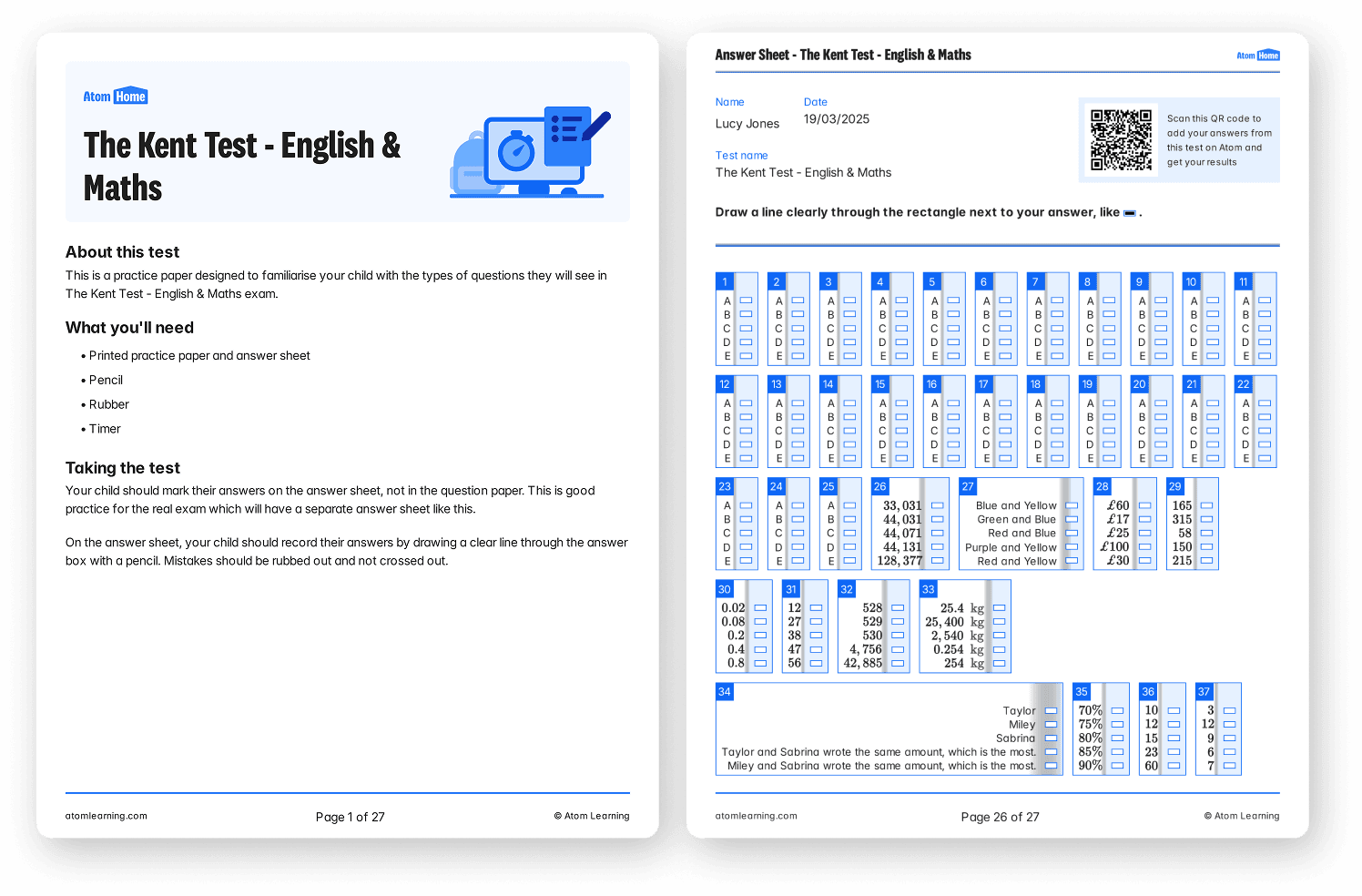Contents
Atom Learning is partnered with Tunbridge Wells Grammar School for Boys. You can read more about our partnership here.
Thinking about applying to Tunbridge Wells Grammar School for Boys? Find out everything you need to know about admissions and how to prepare your child for success in the Kent Test in 2025.
Key information for Tunbridge Wells Grammar School for Boys
Address: Tunbridge Wells Grammar School for Boys, St John's Road, Tunbridge Wells, Kent, TN4 9XB
Number of pupils: approx 1,700
Admissions contact: [email protected]
Number of places in Year 7: 300
11+ exam: Kent Test
Catchment area: yes
Dates for your diary
Monday 2nd June 2025: Kent Test registration opens
Tuesday 1st July 2025: Kent Test registration closes
Thursday 11th September 2025: Kent Test date for children in Kent primary schools
Saturday 13th – Sunday 14th September 2025: Kent Test date for children not in Kent primary schools
Thursday 16th October 2025: Kent Test results sent to parents
Friday 31st October 2025: secondary school common application deadline
Monday 2nd March 2026: national school offers day
Dates can vary, so always check with your target schools!
About Tunbridge Wells Grammar School for Boys
Tunbridge Wells Grammar School for Boys (TWGSB) is a selective school founded in 1956. Rated Good by Ofsted, the school prides itself on a strong academic record and pastoral care. Boys can try a wide range of co-curricular activities. It helps them learn about sports, culture, and develop their social interests.
As part of a £7.5 million expansion project, TWGSB added facilities including a new teaching centre for maths, ICT and food tech, a six-court sports centre, and an annexe site in Sevenoaks. The school also has its own cricket, rugby, football and softball pitches and a 3G pitch.
How to apply to Tunbridge Wells Grammar School for Boys
Tunbridge Wells Grammar School for Boys is a selective school. This means that your child will need to take the 11 plus exam to be eligible for a place. In Kent, the 11 plus is known as the Kent Test.
Registration for the 2025 Kent Test opens on Monday 2nd June 2025 and closes on Tuesday 1st July 2025. The exam will take place in September 2025 and you’ll receive your child’s results in mid-October. You can then use these results to decide whether to apply for a place at Tunbridge Wells Grammar School for Boys.
To apply, you’ll need to name the school as one of your preferred schools on the secondary school common application form. This will be available on your home council website from early September and must be submitted by Friday 31st October 2025.
Remember – passing the 11 plus doesn’t guarantee that your child will be allocated a place at your preferred school. Many grammar schools are often oversubscribed with qualified children. Schools and their admissions authorities work through admissions criteria to prioritise children for places. We’ve included the admissions criteria for Tunbridge Wells Grammar School for Boys below.
What's on the Kent Test?
The Kent Test is made up of two multiple-choice papers and a short writing task. It’s designed to assess your child’s skills in English, maths and reasoning — and to help grammar schools identify potential.
Each paper lasts around an hour, and your child will mark their answers on a separate answer sheet (this gets marked electronically).
Here’s what to expect:
Paper 1: English and maths
This paper is split into one 30-minute section that tests English, and another 30-minute section which assesses maths.
Each section includes a short 5-minute practice activity. This part isn’t marked; it just helps your child get familiar with the questions.
What’s in the English section?
The English section is mainly made up of a reading comprehension task. There are also questions that check your child’s grammar, punctuation and vocabulary. These might include:
Choosing the best word to complete a sentence
Spotting spelling or grammar mistakes
Finding synonyms or antonyms
What’s in the maths section?
Your child will be tested on what they’ve learned in school in maths up to the start of Year 6. They should feel confident with:
Times tables
The four operations (adding, subtracting, multiplying and dividing)
Fractions, decimals and percentages
Ratio
Area, perimeter and measurements
Some of the questions might feel more challenging than usual. This is so your child can show how they use their knowledge to solve new types of problems.
Paper 2: Reasoning
This paper focuses on verbal reasoning, non-verbal reasoning and spatial reasoning.
These topics aren’t usually taught in school. They’re included in the test to measure your child’s potential, not just what they’ve learned so far.
Verbal reasoning
This checks how well your child can solve problems using words, letters and numbers. For example, they might be asked to spot patterns in sequences or choose words with similar meanings.
Time: 30 minutes
Includes a 10-minute practice and a 20-minute test
Non-verbal & spatial reasoning
These sections use shapes, diagrams and patterns. Your child will need to spot similarities and differences, complete sequences, and mentally rotate shapes.
Time: 30 minutes in total
Broken into short, timed sections (each lasting around 4–5 minutes)
Each section starts with a short, guided practice session.
Creative writing task
All children also complete a short creative writing exercise. This isn’t marked as part of the main test, but it might be used if your child’s results are reviewed by a headteacher panel or at appeal stage.
The creative writing task lasts around 40 minutes, including 10 minutes for planning and 30 minutes for writing.
Not sure where to start with Kent Test prep?
Our free Kent Test baseline test helps you take the guesswork out of studying. Your child will answer questions similar to those in the real exam across English, maths and reasoning.
You’ll get instant results, including their standardised age score (SAS), a breakdown of their strengths and areas to improve, and next steps to help them progress!
How does place allocation work at Tunbridge Wells Grammar School for Boys?
Your child will get three standardised scores in the Kent Test – one each for English, maths and reasoning. They will also get one total (aggregate) score. Children need a total score of 332 or higher and no single score lower than 107 to qualify for a place at a Kent grammar school.
The school’s planned admission number PAN of 300, includes 210 places at the Tunbridge Wells campus and 90 at Sevenoaks.
Therefore, if more than 300 children applying to Tunbridge Wells Grammar School for Boys achieve these scores, the school applies oversubscription criteria. Children are prioritised for places in the following order:
Oversubscription Criteria
Children are ranked in order by their exam score, and are prioritised for places in this order:
Looked After and previously Looked After Children.
Boys with a sibling already attending TWGSB when the new Year 7 starts.
Boys with an Education, Health and Care Plan (EHCP) naming the school.
Boys with a medical, health or special access reason to require a place at the school, or whose parents have such a reason. This will need to be supported by written evidence from a relevant practitioner.
Boys who live within three miles of the school.
Boys who live in the school's named parishes (see below).
Other boys in order of how close they live to the school.
TWGSB catchment area
As part of its admissions policy, Tunbridge Wells Grammar School for Boys prioritises children who live within three miles of the school, or in one of these parishes:
Badger’s Mount, Bidborough, Brasted, Capel, Chevening, Chiddingstone, Cowden, Dunton Green, Edenbridge, Hadlow, Halsted, Hever, Hildenborough, Ightham, Kemsing, Knockholt, Leigh, Otford, Pembury, Penshurst, Plaxtol, Riverhead, Rusthall, Seal, Sevenoaks, Sevenoaks Weald, Shipbourne, Shoreham, Southborough, Speldhurst, Sundridge with Ide Hill, Tonbridge, Tunbridge Wells, and Westerham.
How can I help my child prepare for the Kent Test?
The Kent Test is designed to challenge (and stretch!) children applying for grammar school places. But with the right approach, your child can build the skills and confidence they need to shine in September 2025.
Here are four key ways you can support their preparation at home.
1. Take a bitesize approach
The most effective 11+ preparation happens in short, consistent bursts. For 10–11-year-olds, educational psychologists recommend daily learning sessions of 20–30 minutes – just enough time to reinforce core skills without losing focus.
On Atom Home, your child will follow an adaptive learning journey, answering interactive questions at just the right level for them. They'll earn coins, unlock collectibles, and explore exciting worlds, making learning a rewarding adventure.
2. Read a wide range of texts
The Kent Test includes a challenging English section that assesses comprehension, inference, and vocabulary. Daily reading is one of the best ways to help your child strengthen these skills.
Encourage them to read a variety of genres and authors, from classic fiction to contemporary stories, non-fiction and poetry. Exposure to different styles and voices will help them build a deeper understanding of tone, purpose, and meaning – all key skills for 11+ success.
3. Build exam technique early
As your child becomes more confident with Year 5 content, it’s time to focus on exam technique. The Kent Test includes multiple-choice questions across English, maths, reasoning and spatial reasoning – so it’s important your child is familiar with the format.
Regular practice with mock tests can help them:
Develop problem-solving strategies
Improve time management
Stay calm under pressure
With Atom Home, you’ll get access to online mock tests and printable practice papers tailored to the Kent Test.
4. Encourage a growth mindset
Success in the 11+ isn’t just about knowledge; it’s also about mindset. Praise your child for their effort, not just their results. When they face a tricky topic or make a mistake, remind them that every challenge is a chance to learn and grow.
Set small, achievable goals and celebrate their progress along the way. This will help them stay motivated, build resilience, and approach the exam with confidence.
Kent Test practice papers and online learning
Preparing for the Kent Test can feel daunting — knowing what to cover, keeping your child motivated, and making sure you’re on the right track. With Atom Home, you’ll have everything you need to guide your child with confidence. No tutor required.
Get a personalised exam plan each week, so your child covers every topic in manageable steps
Download unlimited Kent 11+ practice papers, then upload a photo of their answers for instant, stress-free results
Take unlimited Kent 11+ mock tests that replicate the real exam, building confidence under timed conditions
Track their performance with SAS scores and comparisons against other children applying to Kent grammar schools
Everything you need for 11+ success
Join 100,000+ families who trust Atom to help their children excel in Key Stage 2 and entrance exams. Endorsed by grammar schools, loved by parents.
Contents



